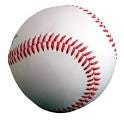A Baseball Seesaw
Yesterday, we talked a bit about the “new balance” in baseball. The basic theme is this: Hitters fell behind for the first few years of this decade. As pitchers started throwing harder, as strikeouts skyrocketed, as teams played targeted defense, hitters found themselves boxed in, no place to turn. Batting averages plummeted. On-base percentages plummeted. Runs plummeted.
Hitters tried desperately to find a countermeasure to all this pitching dominance, and in the end the best they could come up with was: “Let’s hit many, many more home runs.”
It might not have been the most elegant comeback, but it has so far been pretty effective. Strikeouts still go up. Defenses still smother those ground balls up the middle and pulled line drives were hits for a half century.
But there is no defense for balls hit over the fence, and that’s the play in 2017. Runs are up. Hitters mash home runs at a record rate. They change their swings to give them more uppercut. Players talk in “Ground ball bad; ball in air good,” grunt-speak. Launch angles are the rage.
And so, as mentioned, I call this baseball’s new balance.
My friend Bill James says “balance” is the wrong word.
“Well. . .not to be argumentative, or sorry to be argumentative,” he writes, “but I think it is COMPLETELY wrong, absolutely wrong, to say that this is the game finding it’s balance. It’s not the game finding a balance; it is the game drifting rapidly toward an extremity.”
His point is this: Balance is a temporary and precarious thing. You think of an old fashioned weighted body scale. You get on the scale, move the weights on top until the little arrow levitates magically in its little frame. Any slight movement by you, and the arrow quivers. It rises. It falls. You make the slightest adjustments every time to find that elusive balance. But the point is, there are levers to pull, things you can do to find that balance.
What Bill is saying is that what’s happening in the game — mainly with all the strikeouts — is sending the game entirely out of balance.
“What is permanent, or durable at least if not permanent,” he says, “is not BALANCE but extremity. IMBALANCE.”
And then he offers a great analogy. Think of two kids on a seesaw. “It is actually a very interesting phenomenon, a kid’s seesaw,” he writes. “If you put two kids on a seesaw, they will instinctively figure out the balance. The bigger kid will scoot forward so that the impact of his weight and distance from the center is the same as the smaller kid, so that the two of them will balance so they can go up and down. What is really interesting there is that kids instinctively figure that out; nobody has to explain it to them.
“A similar thing DOES happen in baseball, and has happened, and you’re right about the balance point in a sense; the hitters have scooted forward and the pitchers have scooted backward so that they’re maintaining balance, in a sense.
“But we are dangerously near the point at which the fat kid is right in the center so the seesaw doesn’t work anymore. We are maintaining a balance by rushing toward the extreme points.”
This is a great point. In my original piece, I wrote that, up to now, a pitcher with a ball and eight defenders behind him vs. a hitter with a bat has been a fair fight. The hitter has always succeeded enough (getting on base roughly one out of every three times) to keep the game interesting and exciting. Every now and again the pitcher throws the game out of balance somehow (maybe a new pitch comes along like the slider or split-fingered fastball) and after a time the hitters responds in kind (with film study or a lighter bat). This is the game in motion.
But Bill thinks — and I think he has a strong point — that the game careens toward imbalance. Pitchers keep throwing harder. Defenses keep getting smarter. Hitters keep working out and plotting for the long ball. There is no place left to go on the seesaw.
One of the marvelous things about baseball is that it gives the illusion of timelessness. The other day, I had a silly and fun argument with Chris Russo on “High Heat” about Jimmie Foxx and Albert Pujols.
Chris was making the case that Foxx was the better right-handed hitter. I said this is absolutely ludicrous. Chris pointed out the stats of Foxx’s best seasons were better than the stats of Pujols’ best seasons. I said Foxx played day games before Jackie Robinson in an absurd hitters park in an eight team league when offense was ridiculous and starting pitchers threw 85 mph fastballs all day until their arms fell off.
Television, as you know, tends to amplify the extremes of arguments — I do believe Jimmie Foxx is one of the greatest hitters in baseball history (A few years ago I ranked him as one of the ten best hitters ever, which might have been overkill but the point stands). I also believe that we people who love baseball grant ourselves the illusion that Jimmie Foxx was playing the same game as Albert Pujols when he very much was not.
I hold tighter to that illusion more than most, by the way.
And so we hold also hold tight to the illusion that the core battle of baseball, pitcher vs. hitter, will hold up forever and the game will not need to make big and perhaps uncomfortable changes to come back into balance. For now, at least, hitters smack enough home runs to keep the seesaw going up and down.
